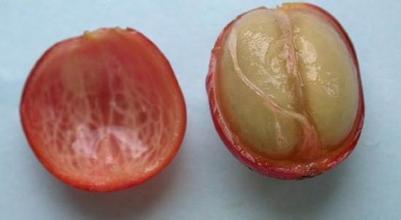Coffee beans how to choose coffee beans? How to choose coffee beans? Buy coffee beans with ripe beans
How to choose coffee beans? How to choose coffee beans? -choose and buy coffee beans
Reference index of coffee bean grading
In fact, at present, there is no unified classification in the coffee industry, and each country of production is divided into different levels. For example, Brazil sets NO.2 as the highest level and Jamaica sets NO.1 as the highest level.
As for individuals, because people's preferences and taste are different, grading can not fully show the flavor of coffee, it is more about the quality of coffee, so the level of coffee is not very important to me. I think there are more than 60 coffee-producing countries at present, and they are produced in South America, Central America, the West Indies, Asia, Africa, Arabia, the South Pacific and Oceania. You won't know until you taste it. Moreover, domestic coffee stores usually do not mark the grade, can only see Colombian coffee, Mantenin coffee, Kenya coffee and so on, but do not see the grade. So, taste is the last word.
This is the earliest method of grading and is still used in many parts of Brazil. The method of identification is to randomly take 300 grams of samples, find out the defective beans in the samples, and accumulate different scores according to the types of defects. After the identification is completed, it will be rated as Gr2~Gr8 according to the accumulated defect score, but there is no Gr1. If you want to buy first-class Brazilian beans, it will make a joke.
However, generally speaking, we can make reference to the following three indicators for grading:
(1) the size of coffee beans
Some people say that the size of beans will not affect the flavor of coffee, such as Yemen Mattari, beans have large and small particles, but it is still the top grade of coffee. However, in many producing areas, the size of coffee beans is indeed a valuable indicator.
This classification is generally used in Kenya, New Guinea, Puerto Rico, Zimbabwe, Tanzania and Uganda. In addition, this classification is also used in many Brazilian coffee.
(2) the number of defective beans
(3) the origin of coffee beans
Coffee beans are processed from the fruits of coffee trees, which grow at 25 degrees north and south latitudes around the equator (pictured below), that is, tropical and subtropical regions.
(4) the new and old coffee beans
New coffee is called "new bean", which refers to the coffee raw beans harvested that year. The raw coffee beans produced the year before are called "old beans". The raw beans harvested in earlier years are called "old beans". Only the new beans produced in that year are high-grade products, because the taste and aroma of new beans are relatively rich.

Important Notice :
前街咖啡 FrontStreet Coffee has moved to new addredd:
FrontStreet Coffee Address: 315,Donghua East Road,GuangZhou
Tel:020 38364473
- Prev

Introduction of fine coffee, introduction of coffee, coffee beans, coffee, coffee.
Blending coffee is the blending of two kinds of high-quality coffee will suppress each other's unique flavor, matching should also pay attention to color, matching coffee beans also have different characteristics to reconcile an attractive taste. Although some fixed varieties of coffee can be drunk directly as individual coffee, most of the coffee has more or less defects in flavor. For example, there is no special flavor
- Next

Coffee beans growing environment introduction boutique coffee raw boutique coffee how to grow? coffee species
Green coffee beans are the seeds of the coffee tree. It's what people usually call the hidden wealth of coffee cherries. They are mistakenly called beans because they are similar to the beans we normally see, but they are actually coffee seeds. Usually coffee berries contain two flat, oval green beans, and a few coffee berries contain only one.
Related
- Guji coffee producing area of Guji, Ethiopia: Humbela, Shakiso, Wulaga
- What is the most expensive variety of Qiloso in BOP multi-variety group?
- How to store the coffee beans bought home?
- Why are Yemeni coffee beans so rare now?
- Ethiopian Sidamo all Red Fruit Sun Sun Santa Vini Coffee beans
- SOE is mostly sour? What does it mean? Is it a single bean? what's the difference between it and Italian blending?
- Is Italian coffee beans suitable for making hand-brewed coffee?
- How to choose coffee beans when making cold coffee? What kind of coffee beans are suitable for making cold coffee?
- Just entered the pit to make coffee, what kind of coffee beans should be chosen?
- Can only Japan buy real Blue Mountain Coffee? What are authentic Jamaican Blue Mountain coffee beans?

